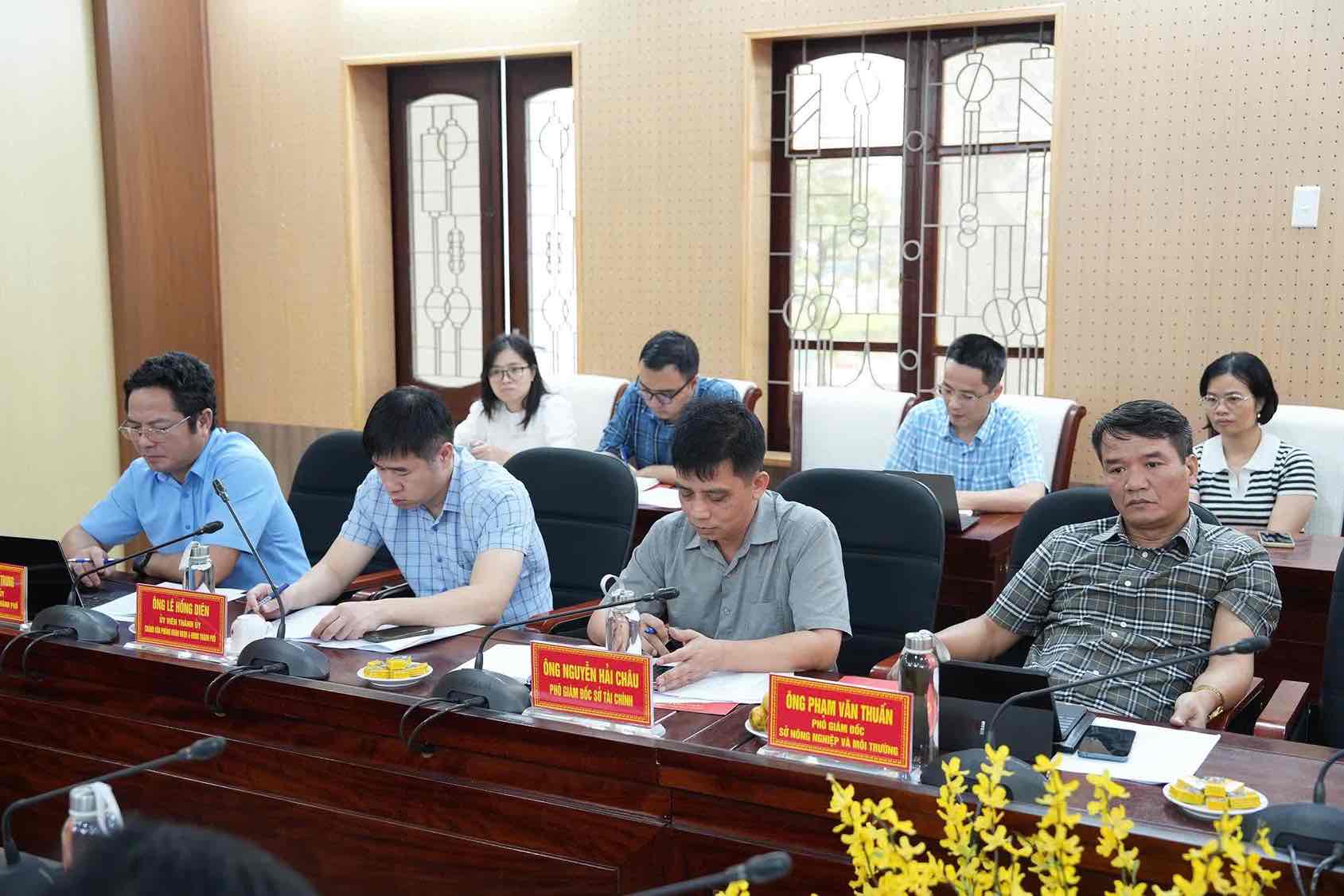The thematic monitoring delegation of the Hai Phong City People's Council has just conducted a working session on the implementation of legal regulations in state management of drainage and urban wastewater treatment in Tu Minh ward and Hai Duong ward.
In Hai Duong ward, Chairman of the Ward People's Committee Pham Thi Thanh Van said that during light and moderate rains, the area was basically not flooded. However, when heavy rains occurred, some locations in the area were still partially flooded, such as the intersection of Quang Trung - An Ninh streets, Nguyen Van To - Quang Trung streets, the end of Quang Trung street (old Rang Nhan) and Nguyen Huu Cau street (old Phu Luong market area).
The Ward People's Committee coordinates with relevant departments, offices and units to prepare flood prevention plans, deploy them to each residential group, assign tasks, prepare materials and forces, and at the same time inspect and clear the sewer, ditch, lake and ditch system. Pumping stations, culverts under the dike, and culverts on the canal are also maintained and dredged for effective operation.
Regarding wastewater treatment, Ms. Pham Thi Thanh Van said that Hai Duong ward currently has Ngoc Chau Wastewater Treatment Plant with a designed capacity of 13,340 m3/h, but in reality, it operates about 6,000 m3/h. The plant uses a mechanical treatment line, which has not been biologically treated before discharging into the Thai Binh River.

The station also has a sludge treatment tank to receive sludge from the self-destruction tank. The Ward People's Committee has directed residential groups to propagate and raise people's awareness of environmental protection, limit direct discharge into the drainage system, and organize general cleaning, dredging, and waste collection in public areas, canals, and ditches.
In Tu Minh ward, Party Secretary - Chairman of the People's Council of the ward Nguyen Ta Duan said that the ward's terrain is relatively flat but there are some low-lying areas. The surface drainage system mainly relies on ponds, main canals such as T1 canal, Dai An canal, Tien Kieu - Do Cay canal and Cam Dong - Phi Xa canal, ending at the Sat river.
Some canals have been renovated, dredged, and reinforced, but there are still degraded sections or have not been dredged regularly, leading to local flooding during heavy rain. Industrial parks such as Dai An have basic drainage systems, but some expansion items are not yet complete, and forced pumping stations are still limited in capacity. Residential ponds play a role in regulating and storing water, but the area is narrowed due to urbanization.
Regarding wastewater treatment, Tu Minh ward has invested in a separate collection system for a part of residential areas, but many residential groups still do not have separate pipes, the wastewater still flows together with the rainwater drainage system and is discharged into ponds, canals, and then into the Sat River. Wastewater from factories in Dai An Industrial Park is collected into a centralized treatment system before being discharged into the environment.
The Supervisory Delegation requested wards to strengthen maintenance, dredging canals, checking pumping stations, maintaining sewers, and at the same time enhancing people's responsibility in environmental protection, limiting the discharge of waste and wastewater directly into the drainage system, in order to improve the efficiency of drainage and urban wastewater treatment, limit local flooding during heavy rain.





